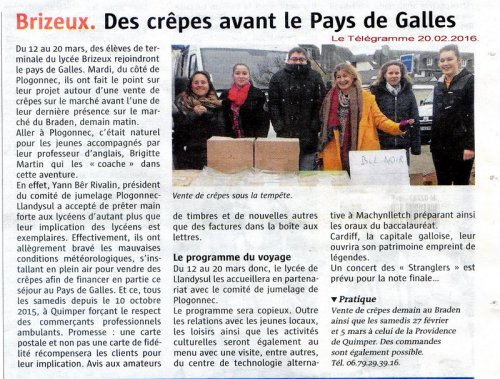
En poursuivant votre navigation sur ce site, vous acceptez l'utilisation de cookies. Ces derniers assurent le bon fonctionnement de nos services. En savoir plus.

New €4m EU project supporting collaboration on coastal and heritage sites in Wales and Ireland
More than €4m of EU funds will help to safeguard heritage and coastal tourism sites in Wales and Ireland from the risks of climate change.
Wednesday 11 January 2017
Finance 11 January 2017 Budget Environment
The funding will also provide a stimulus for marine-based economic growth in the two countries.
Funded by the European Union’s Ireland-Wales programme, the CHERISH project (Climate, Heritage and Environments of Reefs, Islands and Headlands) will support specialist organisations in Wales and Ireland to employ cutting-edge technologies to analyse coastal and island archaeology and maritime heritage sites, which are most affected by climate change, coastal erosion and rising sea levels.
It will fund new excavations, environmental studies, marine mapping and landscape modelling. It will also support future strategies for climate change by providing a deeper understanding of longer-term changes to Wales and Ireland’s heritage and coastal environments which attract thousands of visitors each year.
The collaborative research has the potential to help safeguard coastal and heritage sites from the risk of climate change and minimise negative impacts on local economies.
The project will also provide information to support the development of tourism opportunities through training and public events.
Tourism and heritage sites, such as the Pembrokeshire islands and the Llŷn Peninsula in Wales and the islands off the south and east coasts of Ireland will be the focus of the collaborative research.

Project MIDAS is a UK-based Antarctic research project, investigating the effects of a warming climate on the Larsen C ice shelf in West Antarctica. Recent warming has caused large melt ponds to form on Larsen C during summer, which are changing the structure of the ice. The effects of this on the future of the ice shelf are still unknown.
We are studying these effects through a mixture of fieldwork, satellite observation and computer simulations of the ice shelf and its climate.
Project MIDAS is based at Swansea University and Aberystwyth University in Wales, with support from the British Antarctic Survey and a variety of partners both in the UK and internationally. The project is funded by the National Environment Research Council.




La fracture qui traverse la barrière de Larsen s'étend actuellement sur 80 kilomètres, explique la BBC. Au mois de décembre, elle s'est considérablement creusée, en à peine quelques semaines. A présent, seul un ruban de 20 kilomètres retient l'immense étendue de glace en train de se détacher. Dans un communiqué, les scientifiques britanniques du "Project Midas" annoncent officiellement que :
Supérieure à 5.000 km², la surface de cet iceberg est immense. Soit la superficie du département du Jura. Il pourrait donc s'agir de l'un des dix plus gros icebergs jamais recensés, résume la BBC.
Le professeur Adrian Luckman dirige le "Project Midas". Interrogé par la chaîne britannique, il se dit quasiment certain que l'iceberg va se détacher de la banquise dans les prochains mois.
Projets du gouvernement gallois pour 2017

La Bibliothèque nationale du pays de Galles (en gallois : Llyfrgell Genedlaethol Cymru) est la bibliothèque nationale galloise, fondée en 1907. Elle est située sur une colline de la ville d'Aberystwyth dans le comté de Ceredigion. Elle conserve un grand nombre de manuscrits gallois dont le Livre blanc de Rhydderch, le Livre de Taliesin, le Livre noir de Carmarthen et le Livre d'Aneurin. De plus, la bibliothèque possède une collection de plus de 4 millions d'ouvrages en gallois, anglais et autres langues, en particulier le seul exemplaire du premier livre imprimé en gallois, Yn y lhyvyr hwnn (1546).
BLOAVEZH MAT ! BLWYDDYN NEWYDD DDA !
Devezh deskiñ kembraeg evit brezhonegerien / Cwrs Cymraeg undydd
E Sant-Brieg, e Kreizenn Sevenadurel Vreizhek Abherve, d’ar sadorn 18/02/2017
Sut mae ? Demat deoc’h holl !
Dalc'hit soñj !
Un devezh deskiñ kembraeg a vo kinniget e Sant-Brieg d’ar Sadorn 18 a viz C'hwevrer e Kreizenn Sevenadurel Abherve, 15 straed François Menez.
Eus 10e beure betek 4e30 g.m.
Gant kelennerezed eus Kembre hag a oar brezhoneg.